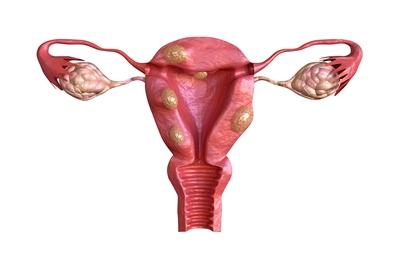Get help for abnormal perimenopausal bleeding

Over your reproductive years, you've come to expect a certain degree of predictability with regard to your menstrual cycle. Whether it's timing, length or amount of flow, there is generally not much variation from month to month. But as you enter perimenopause—the three to five years leading up to menopause—all of this changes. And while some of these changes are manageable, some are not.
"Just as every woman's menstrual cycle is different, so is her experience of perimenopause," says Beverly M. Vaughn, MD, a gynecologist at Lankenau Medical Center, part of Main Line Health. "Many women are caught off guard by the many changes that occur during these premenopausal years and I see a lot of women suffer through heavy bleeding even though there are very effective and minimally invasive treatments for it."
Perimenopause and irregular bleeding
During perimenopause a woman's menstrual cycles may be shorter or longer, and the flow may vary from light to heavy. As ovarian function is declining, ovulation may not occur. The ongoing release of estrogen may cause the uterine lining to thicken while the production of progesterone (to oppose the estrogen) slows down. As a result, the lining continues to build up and may cause irregular bleeding. The thickening of the endometrium may represent a benign change, such as a polyp, or hyperplasia. Most hyperplasia is not a problem but some forms can be precancerous. The bleeding can also represent endometrial (uterine cancer). Fortunately, this is the least likely possibility.
Uterine polyps and uterine fibroids, both of which are benign, may also cause changes in bleeding pattern. Polyps are benign growths composed of the endometrial glands and contain no muscle tissue. A fibroid is a fibromuscular type of tumor that often grows within the muscular layer of the uterus. If the fibroid juts out into the endometrial cavity, abnormal bleeding can result. Both fibroids and polyps can cause extra bleeding due to their location within the interior of the uterus.

Diagnosis of uterine bleeding disorders
A thorough medical evaluation will often include a review your health history and a physical exam. Your doctor may order various tests to diagnose the cause of the abnormal bleeding. This might include testing for certain hormone levels and possibly blood tests, including thyroid tests or coagulation studies to identify clotting abnormalities. Most women will need to have the endometrial lining assessed as well. This is commonly done in an office setting with a biopsy instrument with minimal discomfort. If the diagnosis is still uncertain, vaginal pelvic ultrasound and/or a hysteroscopy may be recommended. A hysteroscope is a lighted instrument that is passed through the vagina into the uterus.
Treatment for heavy bleeding in perimenopause
How heavy bleeding is treated will be determined by the diagnosis. "If there is no pathologic cause for the bleeding (such as an abnormal uterine growth), continued observation and re-evaluation may be the best plan," explains Dr. Bolton.
For growths such as fibroid tumors or endometrial polyps, minimally invasive gynecologic surgery such as hysteroscopic myomectomy, hysteroscopic polyp removal or endometrial ablation may be recommended. The ablation is a heat technique that removes the endometrial lining causing bleeding to slow down or in some cases, stop completely.
For persistent abnormal bleeding, hormone therapy may be an option. Hormone therapy can often help the bleeding problem while also alleviating the associated symptoms of perimenopause, such as hot flashes and night sweats. Oral contraceptives can be offered as treatment in the appropriate patient. Oral progestins can be given cyclically or only when the flow is heavy.
Some women respond well to a progesterone-containing IUD. This provides the endometrial lining with a boost in progesterone while not requiring a dose of hormones to the whole body. Placement of this type of IUD is done in a doctor's office with no need for anesthetics. One newer option is a medication called tranexamic acid, a nonsteroidal medication in the same family as ibuprofen. It only needs to be taken at the beginning of the menses for three to five days, when there is a heavy flow.
Another side effect of heavy bleeding is iron-deficiency anemia, which some women develop in perimenopause. Symptoms of anemia include fatigue, dizziness and headaches.
Another side effect of heavy bleeding is iron-deficiency anemia, which some women develop in perimenopause. Symptoms of anemia include fatigue, dizziness and headaches.
"Ask your doctor for a hemoglobin test if you're experiencing these kinds of symptoms," Dr. Vaughn stresses. "It's often difficult to get sufficient iron from diet alone when you're bleeding heavily every month. A simple iron supplement can make a world of difference if you're iron-deficient."
For persistent difficult bleeding, a hysterectomy may be an option for some women. This will certainly correct the bleeding completely but involves a more aggressive surgery and a recovery period of three to six weeks. This decision is best made after thoughtful discussion with your gynecologist.
Above all, be proactive about your well-being during your perimenopausal years. The changes to your menstrual pattern may not be welcome, but there are things you can do to improve your quality of life and the way you feel about your body during this time of transition.
Next steps:
Get a symptom checker to see if you may be a candidate for our Advanced Gynecology Program
Subscribe to the Well Ahead Newsletter